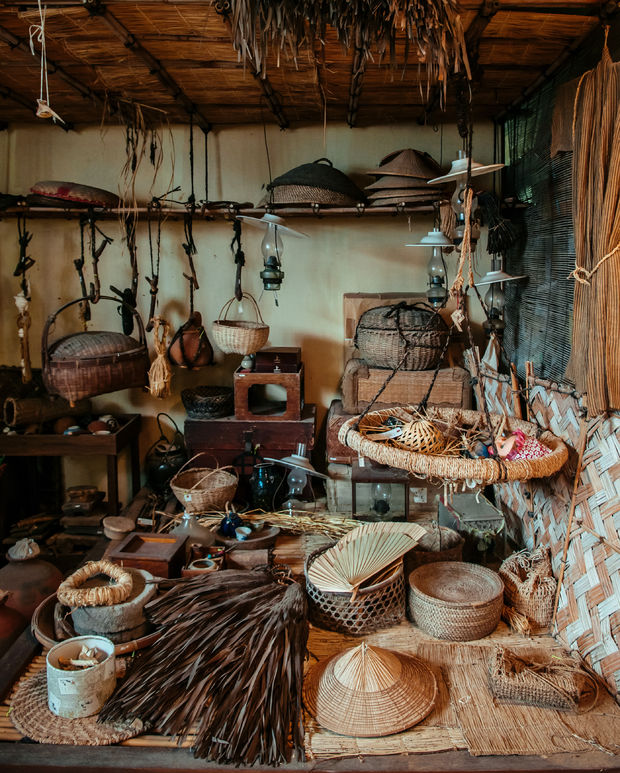
In the 17th century, the Shimazu lords placed a new weapons ban, leaving the Okinawans defenseless against samurai weaponry. In an attempt to protect themselves, the people of Okinawa looked to simple farming implements, which the samurai would not be able to confiscate, as new methods of defense.
Bō (6 ft Staff) The bō is a long piece of wood probably from a long tree branch of different lengths (5-9 feet). It was used as a walking stick and protect oneself against wild animals and bandits. It would also be used to balance buckets or baskets that might be carried when harvesting crops or buckets of water or fish.
Sai (Small Trident) The sai is a blunt pronged shaped metal baton and was used by domestic police to arrest criminals and for crowd control. It was used for striking, bludgeoning over different positions on the body.
Tonfa (Wooden Side Handled Batton) The tonfa has a stick with a perpendicular handle attached a their of the way down the length of the stick and is typically 15-20 inches in length, probably the most well popular component of the Okinawan martial arts weapons. The tonfa provided protection of one’s forearms and could be used for elbow strikes and punches. It was used to swing out from the arm for a strike or thrust.
Nun chaku (Threshin Short Staff) This weapon consists of two wooden sticks connected at one end by a rope or chain. It is mainly a training weapon.
Sansetsukon (Three Sectional Staff) This weapon consists of 3 wooden or metal staffs connected by rope or metal rings. The 3 sections prevented the large sacks of cane from falling off the farmers carts. If needed for self defense the rails could be removed from the cart quickly to become a weapon.
Eku (Boat Oar) In order to use this weapon one had to first master the bo. The Eku is heavier than the bo and more difficult to master. The fisherman after tying up their boats would keep these oars with them to discourage theft of their boats and for self defense. More difficult to master and would be used in large circular attacks.
Nunti-Bo (Spear) This weapon was a bo and a sai combined to create the shape of a spear that could be used for throwing.
Tinbe (Shield) Made of various materials found in vines, cane, metal or turtle shells.
Kama (Short Sickles) The kama is a traditional farming tool used to reaping crops, mostly rice. The handle was made of wood with a curved blade extending from one end.
Surjin (Weighted Rope/ Chain) The surujin or suruchin is made of 2-3 meters of long rope with a weight or stone tied at each end. It was used to unbalance the enemy or entangle them.
Kuwa (Hoe) The kuwa is used as a weapon to kick up mud into the attacker.


